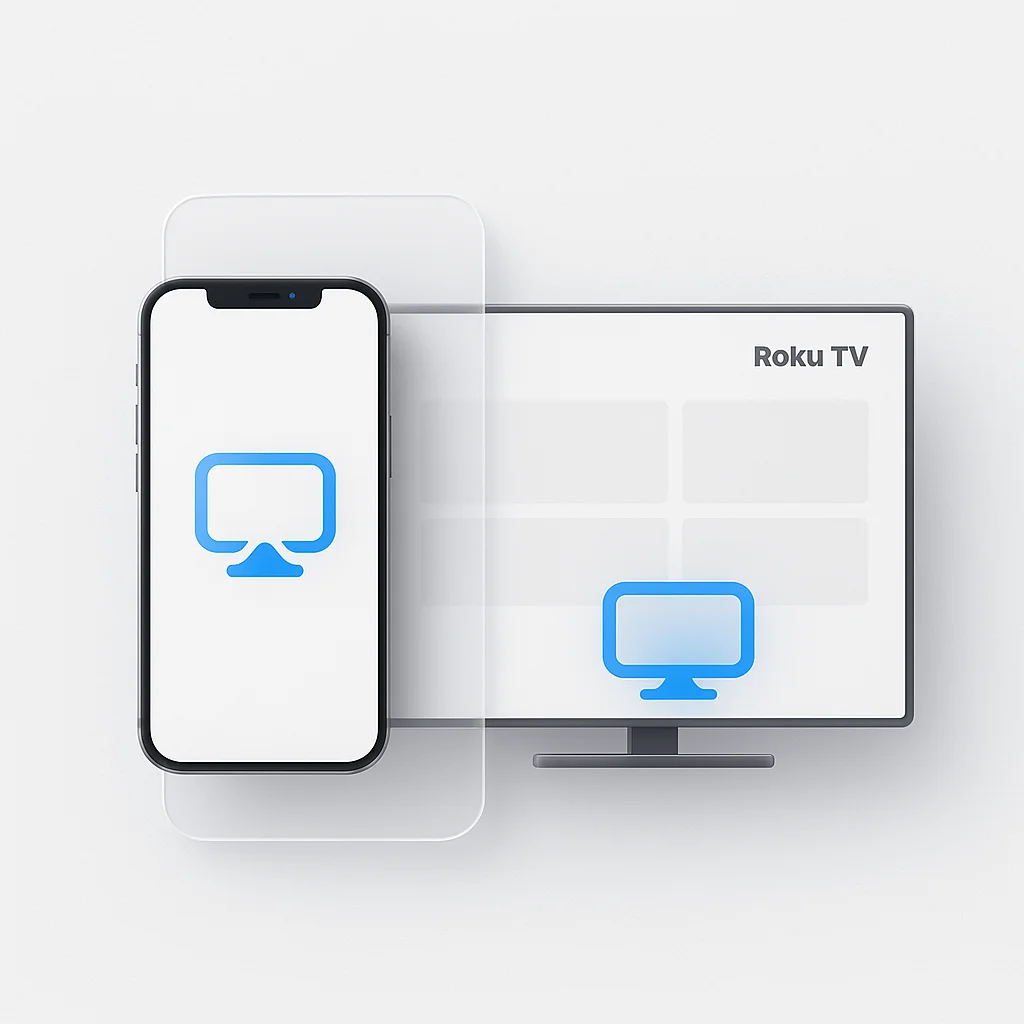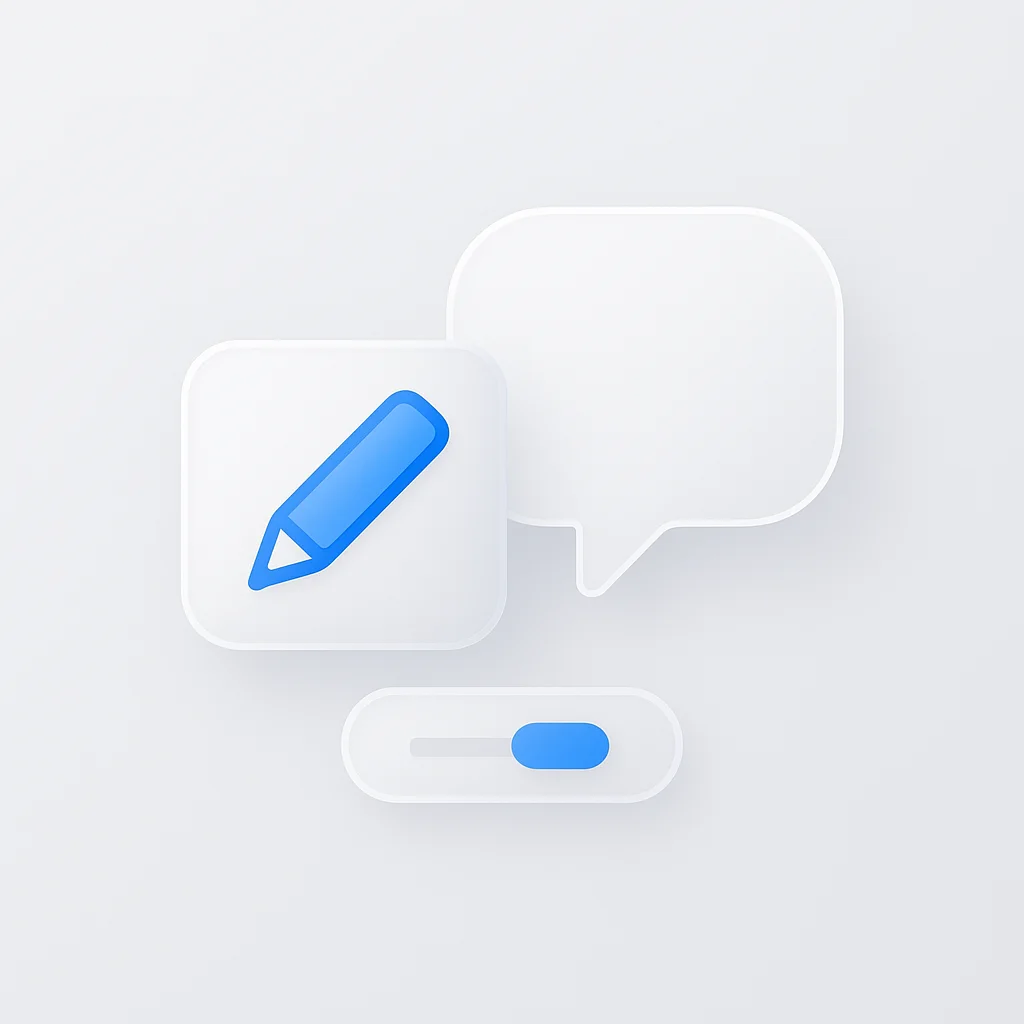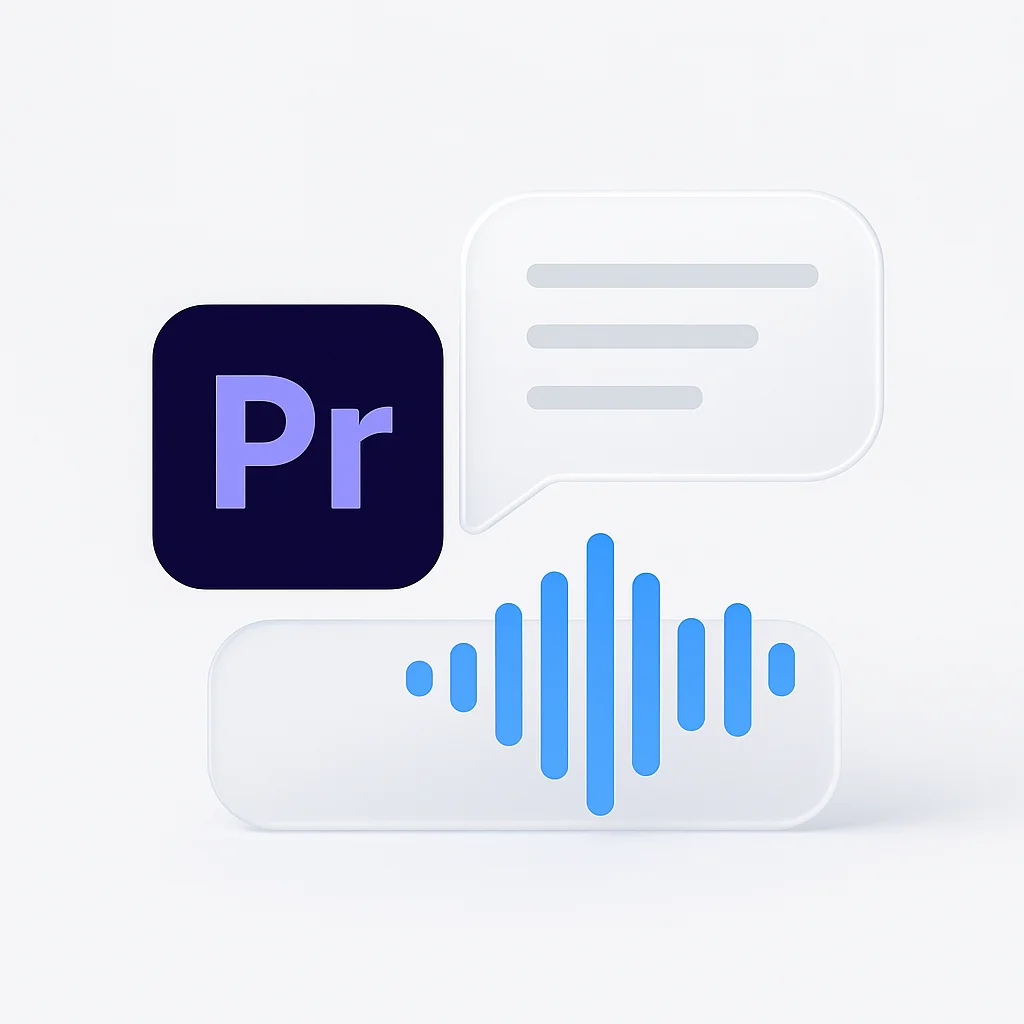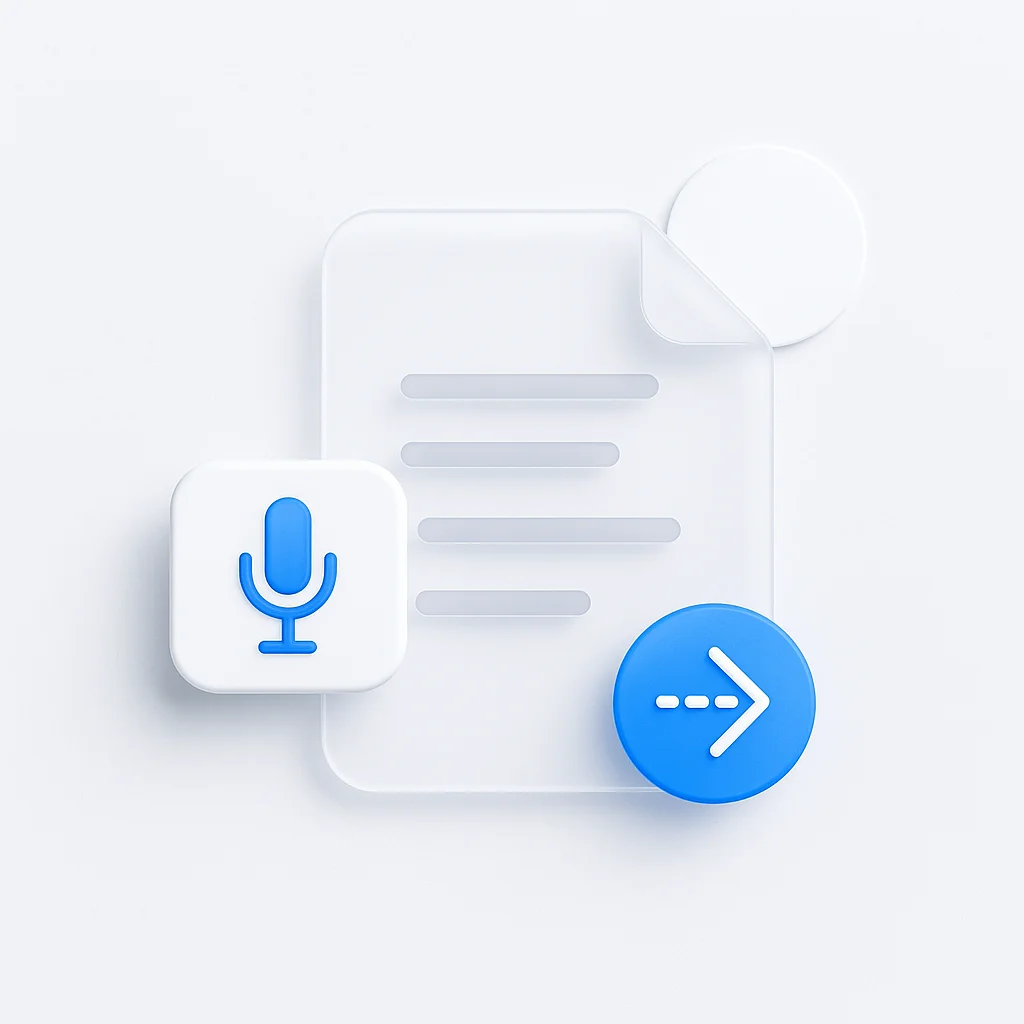Want to display your phone, tablet, or laptop screen on your big Roku TV? This complete guide shows you exactly how to screen mirror on Roku TV from any device in 2025. We’ll cover step-by-step instructions for Android, iPhone, and Windows, plus troubleshooting fixes for the most common connection issues.
Screen mirroring sends a live copy of your device’s screen directly to your Roku TV. Unlike casting specific videos, mirroring displays everything on your device in real-time - perfect for sharing photos, presenting slideshows, or playing mobile games on the big screen.
What is Screen Mirroring
Screen mirroring creates a wireless connection between your device and Roku TV, displaying your entire screen on the television. This differs from casting, where you send only specific content (like a YouTube video) to the TV. With mirroring, everything you do on your device appears on the big screen instantly.
Quick Comparison: Screen Mirroring Methods
| Device | Built-in Support | App Required | Setup Difficulty | Audio Support | Rating |
|---|---|---|---|---|---|
| Android | Yes | No | Easy | Yes | ⭐⭐⭐⭐⭐ |
| iPhone/iPad | ❌ No | ✅ Yes | Medium | Varies | ⭐⭐⭐ |
| Windows PC | Yes | No | Easy | Yes | ⭐⭐⭐⭐⭐ |
| Mac | Limited | ✅ Yes | Medium | Yes | ⭐⭐⭐ |
Before You Start: Check Your Roku Settings
For screen sharing to work, you need to enable it on your Roku device first. It only takes a moment.
- Press the Home button on your Roku remote.
- Navigate to Settings > System.
- Select Screen Mirroring.
- Choose Screen Mirroring mode and set it to Prompt. This is the most secure option, as it requires you to approve every connection request. You can also choose ‘Always allow’ if you prefer.
With that setting enabled, you’re ready to connect your device.
Android Screen Mirroring
Android Built-in Mirroring
Native screen sharing for Samsung, Google Pixel, and most Android phones
Android devices include a built-in screen mirroring feature, often called ‘Smart View’, ‘Cast’, or ‘Screen Cast’. This is the most reliable method for Android users.
Step-by-Step Setup:
- Step 1: Make sure your Android device and Roku TV are connected to the same Wi-Fi network.
- Step 2: On your Android device, swipe down from the top of the screen to open the Quick Settings panel.
- Step 3: Look for the screen sharing icon. It might be labeled Smart View, Screen Cast, Cast, or Wireless Display. If you can’t find it, you may need to edit your Quick Settings panel or find it in your main Settings app under ‘Connected Devices’ or a similar menu.
- Step 4: Your phone will search for available devices. Select your Roku TV from the list.
- Step 5: A prompt will appear on your Roku TV. Use your Roku remote to select Allow. Your Android screen will now appear on your TV.
Watch this step-by-step video tutorial:
✅ Pros
- Built into all modern Android devices
- No additional apps required
- High-quality audio and video
- Works with all Roku models
- Low latency for real-time use
❌ Cons
- Requires same Wi-Fi network
- Can drain phone battery quickly
- May have lag on slower networks
- Some older Android versions lack feature
Common Troubleshooting:
- Roku Not Appearing: Double-check both devices are on the same Wi-Fi network. Restart both devices if needed.
- Connection Failed: Ensure your Roku’s software is up to date (
Settings > System > System update). - Lag or Choppy Video: Move closer to your router or disconnect other bandwidth-heavy devices.
iPhone Screen Mirroring
iPhone/iPad App-Based Mirroring
Third-party apps required for iOS screen sharing to Roku
Unlike Android, iPhones and iPads do not have built-in Roku mirroring. You’ll need a third-party app from the App Store, but several reliable options are available.
Step-by-Step Setup:
- Step 1: Connect your iPhone/iPad and Roku TV to the same Wi-Fi network.
- Step 2: Go to the App Store and download a Roku screen mirroring app. Search for “Roku Screen Mirror” to find popular options like “Mirror for Roku” or “Roku Cast & Screen Mirror”.
- Step 3: Open the app you installed. It will automatically search for Roku devices on your network.
- Step 4: Select your Roku TV from the list inside the app.
- Step 5: You may need to add the app’s corresponding channel on your Roku. The app will guide you through this one-time setup.
- Step 6: Follow the app’s instructions to start mirroring. This usually involves tapping a “Start Mirroring” button and then selecting your Roku device from the iOS Screen Mirroring list in your Control Center.
Watch this step-by-step video tutorial:
✅ Pros
- Works with all iPhone and iPad models
- Multiple app options available
- Some apps offer additional features
- Regular app updates improve compatibility
❌ Cons
- Requires downloading third-party apps
- Free apps often have limitations
- Audio support varies by app
- More complex setup process
- May experience connection issues
💰 App Pricing
Free Apps: Basic mirroring with ads or limitations
Paid Apps: $4.99-$9.99 for premium features and ad-free experience
Common Troubleshooting:
- App Can’t Find Roku: Ensure both devices are on the same Wi-Fi network. Enable “Local Network” permission for the mirroring app in
Settings > [App Name]. - Poor Quality/Disconnections: Free apps often have limitations. Try a paid version or different app if issues persist.
- No Audio: Check app description for audio support. Some apps only mirror video.
Windows Screen Mirroring
Windows Built-in Wireless Display
Native Miracast support in Windows 10 and Windows 11
Windows 10 and Windows 11 include a built-in wireless display feature that works excellently with Roku devices using Miracast technology.
Step-by-Step Setup:
- Step 1: Ensure your Windows PC and Roku TV are on the same Wi-Fi network.
- Step 2: On your Windows PC, click the Action Center icon in the taskbar (or press Windows Key + K).
- Step 3: Click the Connect button (it might be labeled Cast in some versions).
- Step 4: Windows will search for wireless displays. Select your Roku TV from the list.
- Step 5: On your Roku, a prompt will appear. Use your remote to select Allow.
- Step 6: Your Windows desktop will now be mirrored to your TV. You can choose to duplicate your screen, extend it (use the TV as a second monitor), or use only the second screen.
Watch this step-by-step video tutorial:
✅ Pros
- Built into Windows 10 and 11
- Excellent audio and video quality
- Multiple display mode options
- Works great for presentations
- Stable Miracast connection
❌ Cons
- Limited to Windows 10/11
- Requires same Wi-Fi network
- May need network profile adjustment
- Can consume significant bandwidth
Common Troubleshooting:
- PC Can’t Find Roku: Confirm both devices are on the same Wi-Fi. Change your PC’s network profile from ‘Public’ to ‘Private’ if needed.
- Laggy Performance: Use 5GHz Wi-Fi band if available. Update wireless and display drivers.
- Audio Issues: Select Roku as audio output device in Windows display settings after connecting.
Screen Mirroring Tips
- Use a Strong Wi-Fi Signal: This is the single most important factor for a good experience. A weak signal causes lag, poor quality, and disconnects.
- Keep Devices Updated: Make sure your Roku, phone, and PC have the latest software updates. These often include performance improvements for wireless display features.
- Use “Prompt” Mode for Security: Setting your Roku’s mirroring mode to “Prompt” prevents anyone else on your network from connecting to your TV without your permission.
- Close Unnecessary Apps: On your phone or PC, close any background apps you don’t need. This frees up system resources and can improve mirroring performance. Our security also gets covered with user authentication via SMS verification services.
Conclusion
Screen mirroring to your Roku TV opens up endless possibilities for sharing content from your devices. Whether you’re using Android’s built-in features, iPhone apps, or Windows’ wireless display, the process is straightforward once you know the steps.
Remember these key tips for the best experience:
- Ensure both devices are on the same Wi-Fi network
- Keep your devices updated for optimal compatibility
- Use a strong Wi-Fi signal to minimize lag
- Enable “Prompt” mode on your Roku for security
With screen mirroring set up, you can easily share photos with family, give presentations for work, or enjoy mobile games on the big screen. If you’re looking to enhance your app’s screen mirroring capabilities or develop a custom streaming solution, you may want to hire an Android developer to bring your vision to life.
🏆 Our Top 3 Picks for Screen Mirroring
Android Built-in Mirroring
Best overall experience with no apps required and excellent quality
Windows Miracast
Perfect for presentations and multi-monitor setups
iPhone App-Based Mirroring
Reliable third-party apps for iOS users
Choose Based on Your Device
Android Users
→ Use built-in Smart View/Cast feature
iPhone/iPad Users
→ Download Mirror for Roku app
Windows Users
→ Use Windows Key + K for built-in casting
Mac Users
→ Download AirDroid Cast or similar app
Roku TV Screen Mirroring: FAQ
How to screen mirror on Roku TV?
Enable screen mirroring in Roku Settings > System > Screen Mirroring. Set it to “Prompt” mode. Then use your device’s built-in screen sharing feature (Android/Windows) or download a mirroring app (iPhone/iPad) to connect.
Why can’t my phone find my Roku TV?
This is usually a Wi-Fi issue. Both your phone and your Roku must be connected to the exact same Wi-Fi network. If you have a router with both 2.4GHz and 5GHz bands, make sure both devices are on the same one. Restarting both your phone and your Roku can also force them to reconnect and find each other.
Can you screen mirror on Roku TV?
Yes, all Roku devices support screen mirroring. You need to enable it in Settings > System > Screen Mirroring first. Android and Windows devices can mirror directly, while iPhone/iPad users need a third-party app.
How to cast phone to Roku TV?
For Android: Swipe down for Quick Settings, tap Cast/Screen Cast, select your Roku. For iPhone: Download a Roku mirroring app from the App Store, then follow the app’s setup instructions.
Can I screen share to Roku without Wi-Fi?
No. Roku’s screen mirroring feature relies on a direct Wi-Fi connection between your device and the Roku. It cannot work without a shared Wi-Fi network.
Why is my screen mirroring so laggy?
Lag is almost always caused by a poor Wi-Fi connection. The video and audio data for your entire screen has to be sent wirelessly in real-time. Try moving your device and router closer together, or disconnect other devices that may be using a lot of bandwidth (like other streaming devices or game consoles).
What’s the difference between screen mirroring and casting?
Screen mirroring duplicates your entire screen onto the TV. Everything you do on your device shows up on the TV. Casting sends only the content (like a YouTube video) to the TV. This is more efficient and lets you use your device for other things while the video plays on the TV.
Do I need an app to screen mirror to Roku?
For Android and Windows, you do not need an app; the feature is built-in. For iPhone and iPad, you do need to download a third-party app from the App Store because iOS does not natively support Roku screen mirroring.
How to mirror Android to Roku?
Open Quick Settings on your Android device, look for Smart View or Cast, select your Roku TV from the list, and approve the connection on your TV screen.
How to mirror to Roku TV?
First enable screen mirroring on your Roku (Settings > System > Screen Mirroring). Then use your device’s wireless display feature to connect. The exact steps vary by device type.



